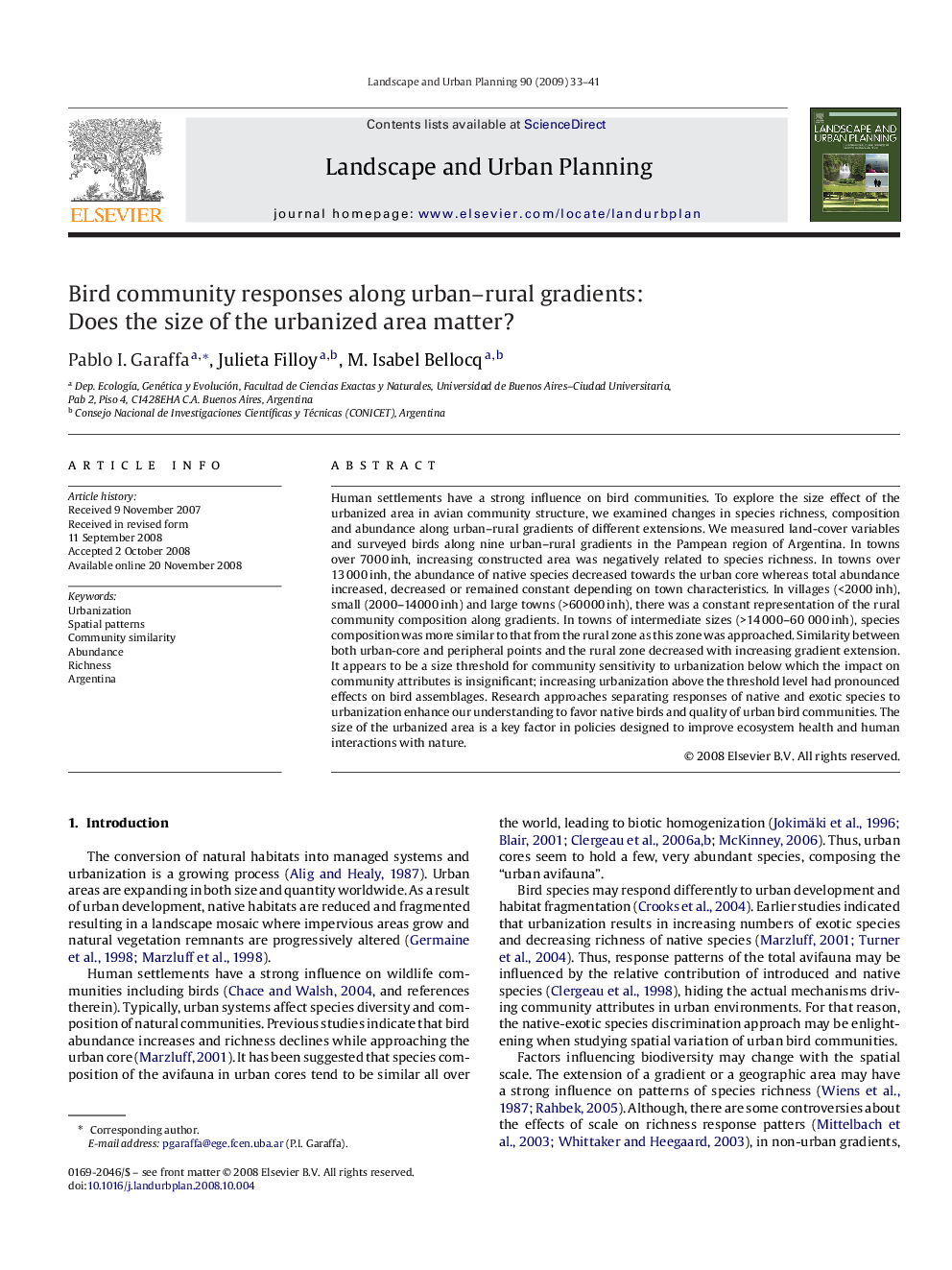| Article ID | Journal | Published Year | Pages | File Type |
|---|---|---|---|---|
| 1050310 | Landscape and Urban Planning | 2009 | 9 Pages |
Human settlements have a strong influence on bird communities. To explore the size effect of the urbanized area in avian community structure, we examined changes in species richness, composition and abundance along urban–rural gradients of different extensions. We measured land-cover variables and surveyed birds along nine urban–rural gradients in the Pampean region of Argentina. In towns over 7000 inh, increasing constructed area was negatively related to species richness. In towns over 13 000 inh, the abundance of native species decreased towards the urban core whereas total abundance increased, decreased or remained constant depending on town characteristics. In villages (<2000 inh), small (2000–14000 inh) and large towns (>60000 inh), there was a constant representation of the rural community composition along gradients. In towns of intermediate sizes (>14 000–60 000 inh), species composition was more similar to that from the rural zone as this zone was approached. Similarity between both urban-core and peripheral points and the rural zone decreased with increasing gradient extension. It appears to be a size threshold for community sensitivity to urbanization below which the impact on community attributes is insignificant; increasing urbanization above the threshold level had pronounced effects on bird assemblages. Research approaches separating responses of native and exotic species to urbanization enhance our understanding to favor native birds and quality of urban bird communities. The size of the urbanized area is a key factor in policies designed to improve ecosystem health and human interactions with nature.
